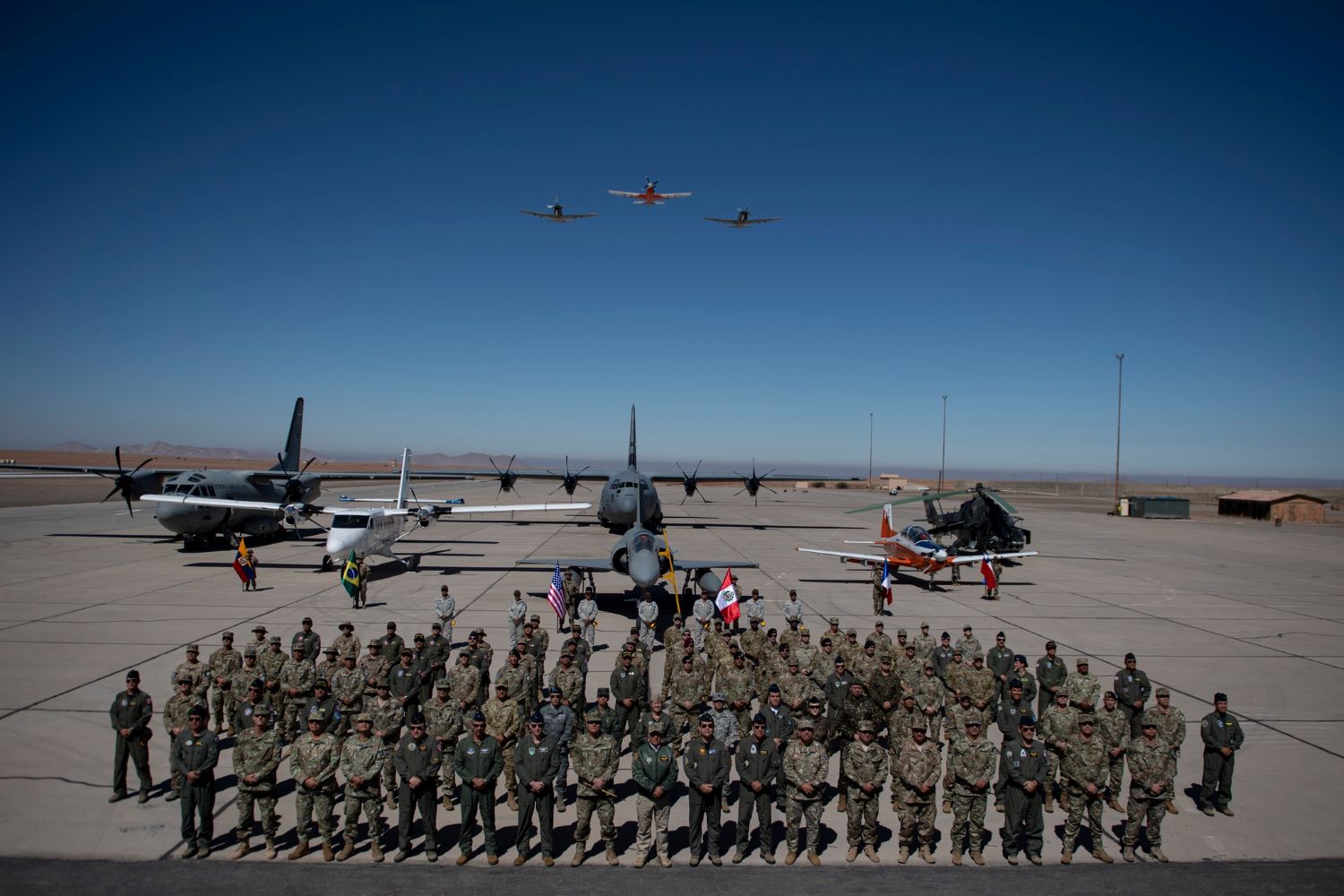Can Smaller Defense Contractors Get a Foot in the Door of the Consolidated Industry?
Geopolitical tensions and weapons depletion are indeed driving a significant increase in global defense spending. In 2023, global military expenditure reached an all-time high of $2.44 trillion, marking a 6.8% increase from the previous year. This surge is primarily attributed to ongoing conflicts, such as the war in Ukraine, and rising tensions in regions like Asia, Oceania, and the Middle East.
The defense industry is undeniably lucrative, but it is already consolidated and dominated by major players. Many companies that want to sell to the U.S. military find it difficult to gain entry. However, even when it seems like opportunities are limited, those who do proper research can still find a way in.
Before we explore how smaller contractors can sell to the DoD, let’s take a look at the current trends in defense acquisition.
Defense Acquisition Overview Over the Last Few Years
According to an analysis by Center for Strategic and International Studies (CSIS), defense contract spending remained steady in FY 2022 at $414.3 billion, a slight increase of 0.1% from FY 2021. This stability occurred despite ongoing military support for Ukraine and a significant drop from FY 2020. The Department of Defense’s Total Obligation Authority (TOA) also increased by 1.2%, reaching $769.5 billion in FY 2022.
In FY 2023, TOA rose to $813.7 billion, reflecting concerns about the evolving threat environment.
Dr. Laura D. Taylor-Kale, Assistant Secretary of Defense for Industrial Base Policy, highlighted that the Department of Defense (DoD) has observed through the COVID-19 response and the conflicts in Ukraine and the Middle East that the U.S. industrial base must be prepared to supply the necessary capabilities for the department.
Global threats are rapidly evolving, and the ongoing war in Ukraine, rising tensions in the Indo-Pacific, and the escalating conflict between Israel and Hamas are expected to place considerable pressure on the U.S. defense industrial base for the foreseeable future.
Foreign Military Sales (FMS) play a crucial role in defense spending, contributing 9.3% of total obligations and increasing from $26.5 billion in FY 2021 to $38.7 billion in FY 2022. In Q2 of FY 2023, FMS obligations totaled $28.9 billion, indicating a potential rise in spending. Quarterly spending trends suggest that although there is variability, the overall spending pattern remains consistent.

Contract obligations varied among military branches in FY 2022, with the Army’s obligations dropping 4.1% to $112.7 billion due to reduced COVID-19 response spending. The Navy and Air Force also saw declines of 5.3% and 6.6%, respectively. In contrast, the Defense Logistics Agency experienced a 15.1% increase to $48.2 billion, largely driven by heightened medical supply spending.
Current Trends in Military Procurement and Bidding
When mentioning the military procurement and bidding, we need to bring the competitive bidding process to the table.
Competitive bidding is the process governments use to select contractors for projects or services, ensuring fairness and transparency. When a government needs something, it announces the requirement, inviting businesses to submit their bids. Companies then compete by offering their best proposals, which are evaluated not just on price, but also on quality, efficiency, and reliability.
The goal is to select the bid that offers the best value for taxpayers. This process prevents favoritism and ensures that public interests are prioritized, making it a fair and open system.
Bidders must provide detailed submissions outlining their technical capabilities and financial stability, complying with set regulations. This thorough process helps contracting agencies make informed decisions. Competitive bidding also promotes innovation, as companies work to offer superior and cost-efficient solutions.
The legal structure that oversees military competitive bidding is based on federal regulations, with the Federal Acquisition Regulation (FAR) serving as the primary guideline for procurement processes related to government and military contracts. Furthermore, the Defense Federal Acquisition Regulation Supplement (DFARS) offers specific regulations tailored to defense acquisitions, focusing on unique elements like security clearances and performance guarantees.
Following regulations is crucial for ensuring fairness and accountability in military contracting, ultimately aiding the military in selecting capable contractors. However, there are concerns that the intricate nature of these regulations may pose obstacles for businesses.
According to a report by Bidscale, the Federal Acquisition Regulation and its associated policies span thousands of pages filled with often conflicting requirements, making full compliance a daunting task. This drawn-out procurement process can leave contracts outdated before they are finalized, stifling innovation and creating significant barriers for new entrants in the market.
To tackle this challenge, numerous agencies are confronting the issue directly. Organizations like the Defense Innovation Unit (DIU), Air Force Innovation Unit (AFWERX), NavalX, Army Futures Command, and the DHS Procurement Innovation Lab (PIL) have established teams dedicated to finding ways to simplify federal procurement and expedite the delivery of capabilities to service members.
The industry has seen a growing adoption of Commercial Solution Opening (CSO) and Other Transaction Authority (OTA) as means to achieve faster results.
Another strategy to streamline acquisition processes is the emphasis on incorporating advanced technologies into procurement operations. This integration includes utilizing artificial intelligence (AI), machine learning, and blockchain to boost efficiency, transparency, and security.
Maintaining transparency and accountability is still a top priority. Implementing e-procurement systems and open data initiatives helps guarantee that the bidding process remains fair and accessible to all stakeholders.
Sustainability is becoming a key consideration in military procurement. Future contracts are likely to emphasize eco-friendly practices and materials, aligning the bidding process with broader governmental goals for sustainability. This shift reflects a growing recognition of the environmental impacts associated with defense operations.
Lastly, collaboration with smaller firms will increase, expanding the pool of suppliers. This trend aims to encourage innovation and cost-effectiveness, ultimately benefiting the military by diversifying solutions available through the competitive bidding process.
The Dominance of Major Defense Contractors

When talking about defense contracts, we have to admit the dominance of those major players in the field.
Major defense contractors hold a significant share of military contracts. For instance, in the United States, the top 100 FY23 contractors accounted for $290.0 billion (62 percent) of the obligated dollars, compared to $274.0 billion (65 percent) in FY22.
The top five defense contractors alone, received approximately 33% of the total defense contract obligations in FY23.
Lockheed Martin led the group with $68.59 billion in contracts, followed by Raytheon Technologies (RTX) at $27.82 billion. General Dynamics received $22.97 billion, Boeing secured $21.79 billion, and Northrop Grumman rounded out the top five with $15.09 billion.
The Capabilities That Turn Them Into Monopolies
These firms engage in a broad spectrum of defense-related activities, from advanced weaponry to cyber capabilities.
Lockheed Martin, for instance, specializes in aerospace and defense systems, most notably the development of the F-35 fighter jet. Similarly, Boeing is renowned not only for its commercial aircraft but also for its military solutions, including the P-8 Poseidon and the Apache helicopter. Raytheon, on the other hand, is a leader in missile systems and electronics, showcasing innovations that enhance national security.
Additionally, international players like BAE Systems and Thales have established robust footholds in the defense sector. BAE Systems excels in naval shipbuilding and armored vehicles, while Thales focuses on surveillance and aerospace systems. The growth of defense contractors is reinforced by strategic government partnerships and evolving military demands worldwide.
Besides the niches that they have, “Lobbying significantly influences defense spending decisions, as defense contractors and interest groups advocate for increased military budgets aligned with their financial interests,” as stated by Total Military Insights.
Lobbying Culture and Smaller Defense Contractors
These organizations frequently use various tactics to influence lawmakers and shape public opinion in favor of increasing military budgets.
Prominent lobbying firms utilize financial donations and relationships with legislators to gain influence. Their goal is to create a policy environment that favors defense programs, demonstrating the intricate connection between politics and defense budgeting. Through focused campaigns, they emphasize the importance of defense spending for national security.
The link between lobbying and politics is often evident in legislative backing for specific defense projects, which can result in substantial public investment in certain weapons systems or military initiatives, regardless of broader strategic needs. Ultimately, lobbying’s role in defense spending underscores the complex ties between political interests and military funding decisions.
To be specific, in the first half of 2023, defense contractors and other defense sector players spent nearly $70 million lobbying the federal government. Lobbying can indeed pose challenges for smaller defense contractors. Larger defense firms often have more resources to spend on lobbying efforts, which can give them a significant advantage in securing contracts. This creates an uneven playing field where smaller companies struggle to compete.
However, some of those companies that are capable of lobbying don’t know anything about this process.
In the article “What You Don’t Know About Lobbying Does Hurt You” (National Defense Magazine, October 28, 2022), Gene Moran identifies three categories of lobbying within the defense industry: “those who lobby, those who lobby without realizing it, and those unaware of how lobbying could benefit them.”
The author highlights the paradox that, despite the advantages lobbying can provide in securing defense contracts, very few defense companies actively lobby Congress. The author points out that only a fraction of defense companies, less than 1% of the industry, have registered lobbyists, even though lobbying can influence contract outcomes.
Several factors contribute to the consolidation of defense contract winners, such as a shrinking industrial base, offshoring, and changes in contract structures. Although the number of lobbyists has grown over time, defense lobbying is not a major player compared to other industries, despite the defense industry being highly competitive, with hundreds of thousands of companies vying for contracts.
The imbalance between the number of defense companies and the low representation in lobbying is significant. Larger companies and a select few receive the majority of defense acquisition dollars, while the odds remain slim for the remaining companies competing for the last available opportunities.
Cost Overruns – Major Defense Contractors Can’t Make It Sometimes

Major defense contractors dominate the lucrative defense industry, but they don’t always perform effectively. One of the key challenges they face is cost overruns, which are a common problem in defense acquisition. These overruns often result in heightened scrutiny and can lead to the restructuring of programs.
In 2015, Lockheed Martin and its subcontractor, Boeing, came under fire for significantly overcharging the Pentagon and U.S. allies for the Patriot PAC-3 missiles. A review revealed that the companies inflated costs, leading to overcharges amounting to hundreds of millions of dollars.
With profits nearing 40%, the incident raised concerns over pricing transparency and the defense contractors’ pricing practices, contributing to a larger conversation about cost controls in defense acquisition.
Northrop Grumman’s Sentinel intercontinental ballistic missile (ICBM) program has faced considerable cost overruns, becoming a major issue for the Department of Defense (DoD). Initially projected to cost approximately $96 billion, the program’s expenses ballooned by at least 37%. This surge in costs triggered a Nunn-McCurdy breach, which mandates that the DoD justify the program’s continuation to Congress, potentially putting its future in jeopardy.
General Dynamics’ Columbia-class submarine program has seen billions of dollars in cost overruns, primarily due to technical difficulties and unforeseen delays. The submarine, designed to replace the aging Ohio-class fleet, is a cornerstone of the U.S. Navy’s nuclear deterrence strategy.
However, persistent challenges in construction and integration have pushed the program’s budget higher than expected, threatening to impact the Navy’s broader modernization plans and raising concerns about the sustainability of such large-scale defense projects.
Boeing’s KC-46 aerial refueling tanker program has suffered from repeated cost overruns and delays since its inception. The program, plagued by technical problems such as flawed refueling systems and inadequate wiring, has led to substantial additional costs and schedule slippages.
Boeing has absorbed billions in losses due to these issues, but the program continues to face ongoing scrutiny from both the U.S. Air Force and Congress as it struggles to meet performance expectations and delivery timelines.
We Need to Make Those Major Defense Contractors Accountable
Charles Mahoney, a political science professor at California State University, Long Beach, contended that defense companies need to be held more accountable as they play an increasingly significant role in U.S. national security. His commentary, originally published on The Conversation in 2017, highlights the growing importance of oversight in the defense industry.
He pointed out that the sharp rise in stock prices for military contractors after Donald Trump’s election reflected investor expectations of increased defense spending.
He said, “Investors are betting that an increase in defense spending will provide a windfall for these firms. For instance, General Dynamics, a large contractor that develops combat vehicles and weapons systems for the U.S. military, saw its stock price jump by more than 30 percent in the months after the election. Likewise, Kratos Defense and Security Services, a smaller firm that builds drones for the U.S. Air Force, saw its shares soar more than 75 percent between November 2016 and May 2017.”

Despite this growth could have been temporary, the reliance on for-profit military and intelligence firms remained a constant in national defense.
Mahoney stated that defense firms were primarily accountable to their shareholders, not the public, raising concerns about whether these companies genuinely served the nation’s interests.
Private contractors, heavily utilized during the Iraq and Afghanistan wars, shifted their focus to counterterrorism, cybersecurity, and intelligence, often assuming roles traditionally held by public employees. However, past controversies, such as the abuses at Abu Ghraib prison and Nisour Square, revealed the challenges of monitoring these companies, especially in conflict zones.
As the industry expanded into areas like cybersecurity and intelligence, Mahoney stressed the need for better oversight.
Efforts to enhance contractor accountability in defense contracting are ongoing, as demonstrated by the provisions in the FY 2024 National Defense Authorization Act (NDAA).
One key requirement mandates that contractors certify the absence of conflicts of interest before entering into contracts, promoting transparency and integrity in the process. Additionally, the NDAA allows for contract modifications in response to inflation, helping contractors manage rising costs due to economic conditions.
U.S. Navy Secretary Carlos Del Toro reinforced the call for holding defense contractors accountable, insisting they deliver cutting-edge technologies to the Navy “on time and on budget.” Addressing industry leaders at the WEST 2024 conference, he criticized some contractors for prioritizing stock buybacks and executive compensation over critical investments in the industrial base.
Del Toro unveiled initiatives like the Taxpayer Advocacy Project to ensure taxpayers receive fair value, while warning that the Navy will take action against underperforming companies.
He also mentioned the critical necessity of a full-year budget to support the Navy’s shipbuilding and maintenance operations. Del Toro warned that operating on outdated fiscal levels would significantly harm the Navy’s ability to maintain readiness and build for the future, stating that the lack of proper funding would severely weaken the nation’s global response capabilities.
Can Smaller and New Defense Contractors Compete?

While the major players is taking a big bite of the cake, we need to know that the remaining part is still lucrative.
The Government Has to Buy from Small Businesses
According to Rick Howard, a former government procurement officer who managed over $82 billion in contracts for the US Federal Government, the government has to buy from small businesses.
“They are mandated 23% of all their spending has to be targeted at small business contracts where the small business is the prime.”
As shared by him, the Department of Defense (DoD) engages in a wide range of purchasing beyond traditional weapons systems, investing heavily in logistics, information technology, and support services.
Over the past few years, the Department of Defense (DoD) has significantly increased its funding allocations to critical areas such as cybersecurity, healthcare, and training programs. For instance, in FY 2024, the DoD’s budget for cyberspace activities reached $13.5 billion, reflecting a 15.4% increase from the previous year. Similarly, the Defense Health Program received around $35 billion in FY 2023.
Other industries involved include food service management, cleaning and janitorial services.
The Department of Defense (DoD) has significantly increased its spending on small businesses. In FY 2022, the DoD awarded nearly $85.2 billion in prime contracts to small businesses. This trend continued with the administration achieving record levels of spending on contracts to small businesses, with small businesses receiving nearly $163 billion in federal contracts in FY 2022.
He stated, “There’s probably some opportunity here selling to the government, no matter what you’re in.”
Efforts to Ensure Equity in Defense Contracting
In defense contracting, there have been significant efforts to ensure equity, particularly for small and minority-owned businesses. For example, the Biden-Harris Administration has set ambitious goals to increase the share of federal contracting dollars awarded to small disadvantaged businesses (SDBs) by 50% by 2025.
This initiative is part of a broader strategy to expand procurement opportunities for these businesses through various federal investments and programs.
The Department of Defense (DoD) has implemented the Equity Action Plan, which aims to address the challenges faced by small, disadvantaged businesses in accessing DoD contracts. This plan includes simplifying compliance requirements and improving the transparency of contracting opportunities.
The 2024 National Defense Authorization Act (NDAA) includes several provisions aimed at supporting small businesses. One significant change is the increase in the goal for contracting with service-disabled veteran-owned small businesses (SDVOSBs) from 3% to 5%.
The NDAA touches on the importance of small, disadvantaged businesses (SDBs). The Office of Management and Budget (OMB) has set a target for federal agencies to collectively award at least 13% of contract spending to SDBs in FY 2024, with the goal of increasing this share to 15% by 2025.
Programs and Resources for Small Defense Contractors
For small defense contractors, there are a few key programs that can help them work with the Department of Defense (DoD). One important program is the Small Business Innovation Research (SBIR) Program, which offers funding to small businesses to work on federal research and development projects.
This program helps small companies create new technologies that the military can use. The Air Force, through its AFWERX innovation office, manages much of this funding, making it easier for small businesses to get involved and contribute to military needs.
Another helpful resource is the Office of Small Business Programs (OSBP), which focuses on increasing small business involvement in defense contracts. This office provides guidance and tools to help companies navigate the complex contracting process.
The government also created a zone for contractors to build a rapport, we are talking about the Directory of DoD Program Executive Offices (PEOs) has been created to help small businesses find the right people within the DoD to connect with. This directory makes it easier for businesses to discover opportunities and understand how to work with the DoD.









